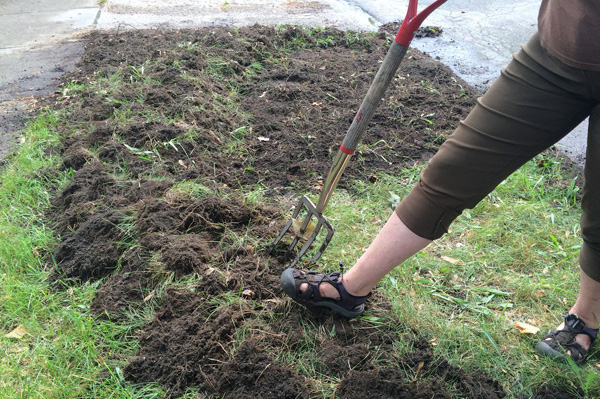Tomatoes have to have loose soil rich with nutrients so that they can quickly establish their root system. The way to ensure the soil is rich in nutrients is to dig in well rotted organic matter and there is no better source for this than your own recycled garden and kitchen waste.
If you want to grow tomatoes and you don’t have a compostor then its time you did, and make sure it’s a decent size. You can always get it kick started with a little bit of Compost Plus and you will have some lovely well rotted compost to prepare your soil with in no time at all.
By that I mean when you prepare vegetables in the kitchen, instead of throwing away the peelings and waste leaves, keep them and throw them into a compostor. This is the same for the other half of the equation, garden waste consisting of grass cuttings and any other organic overspill from the garden such as leaves and cuttings which are usually available in abundance. Try to avoid the tough woody cuttings however as they take a long time to break down.
One word of caution, do not put anything into the compost that you suspect has been diseased, those items should be bagged and binned or burnt. It isn’t worth the risk of contaminating your compost with anything you have the slightest suspicion may have been contaminated in any way.
If you are friendly with a local farmer or anyone that keeps animals, then another good source of organic matter is well rotted manure, especially of the horsey variety. Remember the key expression here is well rotted, you don’t want part rotted components pinching the nitrogen from your plants as it continues to break down. It is only when the process has finished that you get the goodness back, particularly in the form of nitrogen, which tomatoes love.
The pH of the soil is another consideration, so when you prepare your soil for tomatoes, check that the pH level is somewhere between 6.5 to 7.0 for the best results. That can be done very easily with a pH Soil Tester
If the soil is too acidic then you can add a little lime to the mix to bring the level down. Remember when doing this, that small adjustments are better than large because you are less likely to overdo it.
That’s about all there is say to say on preparing the soil for tomatoes, other than good luck and enjoy your lovely tomatoes when they arrive. Oh and if you prefer to grow your tomatoes in containers, then take a look at this post.
photo credit: Digging Out Front Lawn Grand Rapids via photopin (license)


